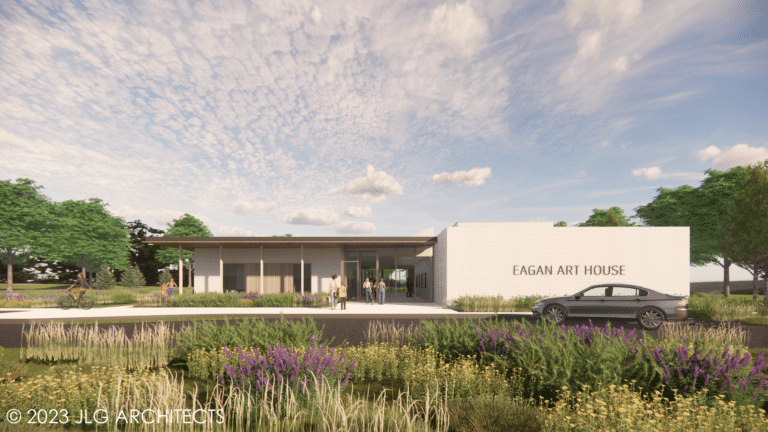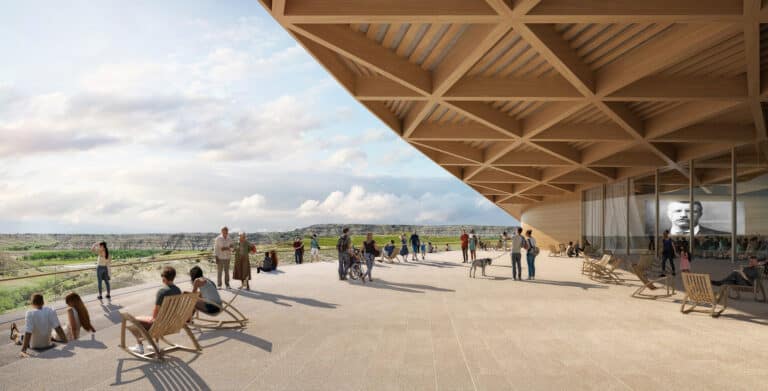Are you looking for ways to reduce your energy costs beyond changing out bulbs and turning off lights?
Since 1989, JLG Architects has led the region in designing buildings that lower – and sometimes even eliminate – maintenance costs. For example, the University of North Dakota Alumni Center is using 40% less energy than a traditional facility of its size, which adds up to a cost savings of $38,000 annually. This type of sustainable design earned the Alumni Center LEED (Leadership in Energy and Environmental Design) Platinum Certification, the highest level possible from the US Green Building Council and the first of its kind in North Dakota. JLG’s Green Committee is made up of employees from each of our seven offices who are constantly researching and evaluating new materials and design and construction techniques in order to provide the best future for North Dakota and all of its residents.
Energy usage incurs the highest costs in a home, and so here are 10 ways that you can enhance your own home’s efficiency, courtesy of JLG’s Green Committee:
1. Home Energy Audit
An energy audit is a great place to start if you are not sure how to make your existing home more energy efficient. The audit will show you where air is leaking and any hot/cold spots which could throw off your thermostat. The energy savings from reducing drafts and other sources of heat or cooling loss in a home range from 5-30% per year. JLG’s Marketing Director had a home energy audit in October and with a little spray foam insulation was able to shave $50 a month off of her energy costs, which more than paid for the audit this winter.
2. Programmable Thermostats
Replacing your thermostat with an energy efficient or programmable system can improve the efficiency of the system and can save you an average of 10% on your annual utility bill. Many JLGers use The Nest, which can be controlled via your cell phone and learns your schedule so that your heat is lower when you are away and toasty warm when you are home.
3. Insulation
Installing insulation with a high R-value is important for an area like Grand Forks. Insulation with a high R-value, which is a measure of thermal resistance, ensures that less heat is lost through the walls and ceiling and keeps cool air inside during the summer. While it is more expensive at the off-set, spray foam insulation offers higher energy savings in the long run over batten foam. I replaced all of the batten foam in my own home in phases over the years with spray foam and lowered my energy costs every year as a result.
4. Hot Water Heaters
Hot water is the 2nd largest expense in your home, accounting for 14-18 percent of your utility bill. Make sure that your water heater pipes are well insulated and, if you have the have the ability to change water heaters, look for a high-efficiency or tankless model. Save your receipts, too – you can receive a tax credit for sustainable renovations or upgrades.
5. Landscaping
Planting deciduous trees near south, east, and west-facing windows provide shade in the summer and let in the sun’s heat in the winter. Planting evergreen trees on the north side of your home help buffer winter’s bitter winds.
6. Water-Saving Appliances
Believe it or not, saving water also saves energy because a majority of the appliances in our homes use water for power. By changing out these appliances with energy efficient or high-efficiency counter parts, you can achieve a water savings of 25-60% and a reduction in your energy bill.
7. Windows and/or Skylight for Natural Lighting
Windows and skylights provide natural light and a connection with the outdoors, warmth, and fresh air. They also dramatically reduce the need for artificial lights.
8. Ventilate Rooms with Lots of Steam like Bathrooms and Kitchens
Make sure that rooms like bathrooms and kitchens are well-ventilated, which prevents the growth of mold and other airborne bacteria that can be caused from too much steam and not enough ventilation. Mold replacement and abatement is costly and requires your ventilation system to kick into high gear, which raises your energy usage.
9. Renewable Sources of Energy to Use in your Home
Installing renewable sources of energy for your home can have a tremendous impact on the environment and lower your monthly utility bill. There are a variety of renewable energy options to consider for your home including solar, geothermal, or low-impact hydropower. Your leftover energy will go back to the power-grid which will provide you with tax credits for the remaining energy that is returned and not used in your home as a result of green energy sources.
10. Replace Wood Burning or Gas Fireplaces
Burning wood in fireplaces are a major source of air pollution in the home during winter. Conventional open fireplaces suck air out of the house and send more heat up the chimney than they provide to the room. Existing wood burning fireplaces should be retrofitted with airtight doors to reduce down-drafting, heat loss, and the amount of air drawn from the house for combustion. A better alternative is a gas insert with sealed combustion. These products have efficiencies up to 85 percent compared to typical fireplaces which are only about 13 percent efficient. EPA (Environmental Protection Agency)-certified wood burning stoves and CSA (Canadian Standards Association)-rated gas fireplaces reduce the amount of particulate pollutants by 75 to 90 percent compared to a standard fireplace. Efficient gas fireplaces consume less gas and save money compared to conventional gas fireplaces.
Although many of these renovation options may be initially pricey, the long-term cost of energy and impact on the environment are undeniably worth the effort. You will see an immediate difference in the utility bills and also feel better knowing that you leaving a smaller footprint in the environment, therefore leaving a better world for your children.
Sources:
Build it Green Remodel Guidelines
Regreen: Residential Remodeling Program
http://www.regreenprogram.org/case-studies
Environmental Protection Agency: Green Homes
http://www.epa.gov/greenhomes/index.htm
Hot water heater Infographic
http://energy.gov/articles/new-infographic-and-projects-keep-your-energy-bills-out-hot-water
Energy Saver 101: Everything you need to know about Home Heating
http://energy.gov/articles/energy-saver-101-infographic-home-heating





